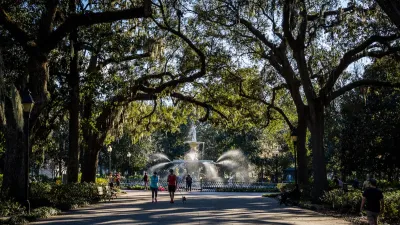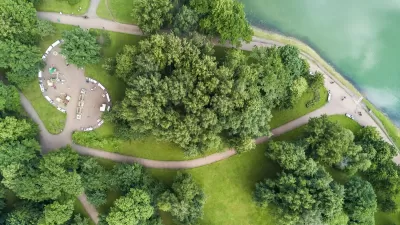Over 20 years, the TKF Foundation has funded the creation of dozens of “green refuges from the stresses of modern life”. With $4.5 million in funding for six new projects, they’re out to prove the physical and psychological benefits of such spaces.
In an increasingly urbanized world, we are bound to find a better connection with ourselves in nature than with our WiFi networks. At least that’s the idea that drives Tom Stoner, founder of the TKF Foundation, who along with his wife and colleagues have funded dozens of restorative green spaces throughout the Washington-Baltimore area via their Nature Sacred program, reports Sarah Goodyear.
The foundation recently announced $4.5 million in new grants for six projects, where “scientists from a number of different disciplines – neuroscience, immunology, genomics, and others – will work to study the effects of specially designed spaces on people living in an urban environment or who are otherwise under stress.”
Grant winners will study the impacts of a range of projects: from a landscaped refuge at a Maryland hospital to a verdant retreat in Brooklyn's Naval Cemetery, and a healing environ for tornado-devastated Joplin, Missouri.
Stoner's take on the word “sacred” is not meant to be religious, Goodyear adds. Rather, he suggests "[i]t’s a sense that these spaces are important, intimate. It’s about our individual, personal relationship with nature."
“[W]ith the development of better tools to assess stress levels and neurological response to stimuli, the time has come to measure that ineffable relationship,” Goodyear says. “Stoner thinks that quantitative proof of the health benefits of well-designed green space could go a long way toward encouraging better funding of the kind of places that we need to maintain our physical and mental health in a rapidly urbanizing world.”
FULL STORY: Green Spaces That Actually Calm the Mind and Body

Alabama: Trump Terminates Settlements for Black Communities Harmed By Raw Sewage
Trump deemed the landmark civil rights agreement “illegal DEI and environmental justice policy.”

Planetizen Federal Action Tracker
A weekly monitor of how Trump’s orders and actions are impacting planners and planning in America.

The 120 Year Old Tiny Home Villages That Sheltered San Francisco’s Earthquake Refugees
More than a century ago, San Francisco mobilized to house thousands of residents displaced by the 1906 earthquake. Could their strategy offer a model for the present?

Opinion: California’s SB 79 Would Improve Housing Affordability and Transit Access
A proposed bill would legalize transit-oriented development statewide.

Record Temperatures Prompt Push for Environmental Justice Bills
Nevada legislators are proposing laws that would mandate heat mitigation measures to protect residents from the impacts of extreme heat.

Downtown Pittsburgh Set to Gain 1,300 New Housing Units
Pittsburgh’s office buildings, many of which date back to the early 20th century, are prime candidates for conversion to housing.
Urban Design for Planners 1: Software Tools
This six-course series explores essential urban design concepts using open source software and equips planners with the tools they need to participate fully in the urban design process.
Planning for Universal Design
Learn the tools for implementing Universal Design in planning regulations.
Clanton & Associates, Inc.
Jessamine County Fiscal Court
Institute for Housing and Urban Development Studies (IHS)
City of Grandview
Harvard GSD Executive Education
Toledo-Lucas County Plan Commissions
Salt Lake City
NYU Wagner Graduate School of Public Service





























